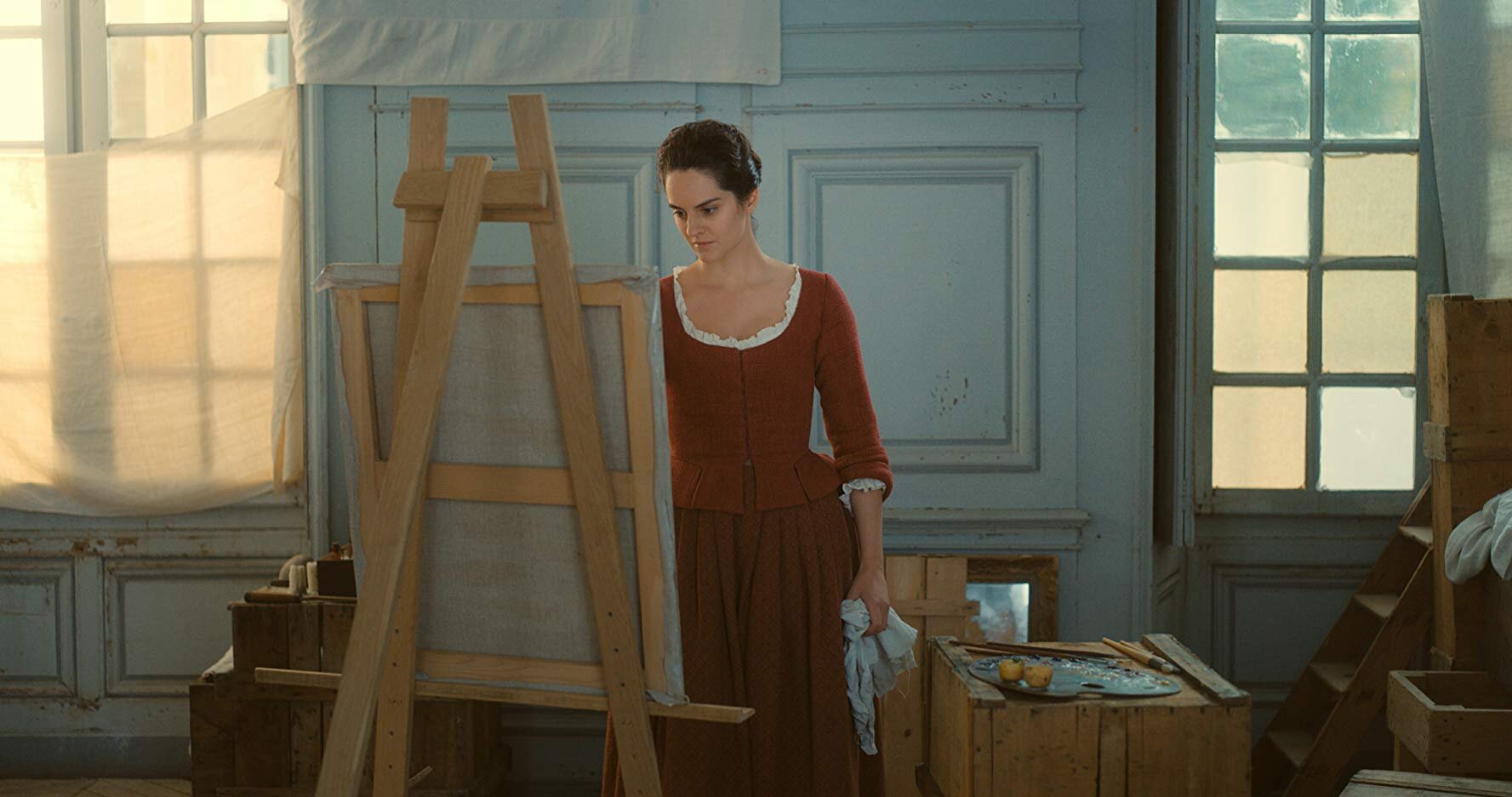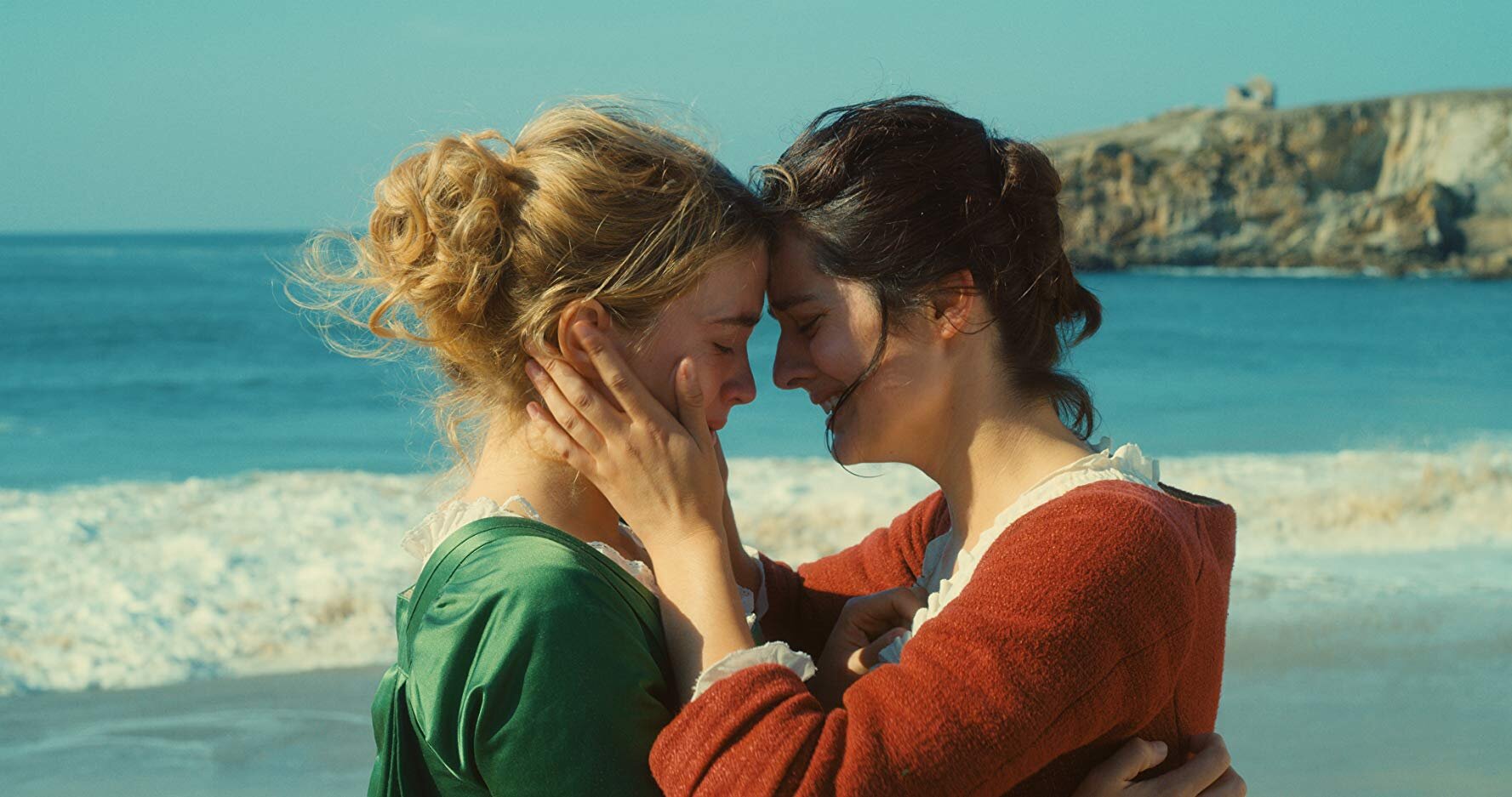Film Review: A Portrait Of A Lady on Fire
© Lilies Films / Hold-Up Films / Arte France Cinéma
by Erik Nielsen
Like any great filmmaker should, French director Celine Sciamma has shown incredible strides and growth in her formal approach to storytelling while not shying away from what made her someone to watch in the first place. Her two previous films “Girlhood” and “Tomboy” like Portrait, are about the process of self-discovery and love while also focusing on the minutiae of everyday life, quietly and with subtlety, culminating into transgressive and profound emotional experiences. A Portrait of a Lady on Fire is a film about love and preserving our feelings in memory. It’s about the choices we make and the small gestures that seem fleeting in the moment but later become deep and personal. Portrait is a masterpiece and one that rages with love.
© Lilies Films / Hold-Up Films / Arte France Cinéma
Taking place during the late 18th Century, the emotional centerpiece stems from the creative process at first. We follow Marianne (Noemie Merlant) a painter who is commissioned to create a portrait of Héloïse (played by a brilliant Adele Haenel) before she is married off to a rich patriarch in Milan. Only she is not to know she is being painted and it must be done in secret, painted with the knowledge and power of her memory by Marianne. The attention to detail and the sounds of her stroking the brush to the canvas while a voice over plays of her recalling every detail of Héloïse's eyes, ears and nose are breathtaking and hypnotic. It could have been 2 hours of just that and the film would still be mesmerizing.
© Lilies Films / Hold-Up Films / Arte France Cinéma
The two go to great lengths to express how they feel about love, art and whether or not there is truth in memory as they spend time walking together on a beach and by the cliffs where. we learn, Héloïse’s sister killed herself. It is through these conversations that Héloïse reveals her love and affection for Marianne. “You were right.” Héloïse says, “I found liberty in solitude, but, I also felt your absence.” It’s not long before Marianne decides to reveal herself as well and she now can paint with Héloïse’s permission. We know the love they share is forbidden but that only makes the love scenes more memorable and tender.
© Lilies Films / Hold-Up Films / Arte France Cinéma
The crux of the movie and what Sciamma wants you to think about most comes from a scene where the two are discussing the myth of Orpheus and Eurydice. They argue over why Orpheus turned around to stare at his love, Eurydice, which caused her to vanish from the world. It’s in Héloïse’s understanding that he knew what he was doing. That the memory he had of her was greater than what she would become. The younger Eurydice would live greater in his heart. And that's ultimately what the film is about - the choice we all make - to live in our memory or the real thing, as it is happening.
© Lilies Films / Hold-Up Films / Arte France Cinéma
It’s so hard not to love this movie just because of the way the two leads stare and interact with each other. You can feel the energy and tension pulsating every frame not just because of the incredible performances but also because of the painterly cinematography from Claire Mathon. There are only about three or four different locations the characters inhabit but never once is there a dull moment. Also, we know not what to feel from a manipulative score - that almost always finds itself in love stories - but in the stares the two romantic leads give each other. The emotional set pieces come from an exchange of the eyes or the way one of them tilts their head to convey the love they feel. Even when they’re at their worst, we understand the passion and care deep within both of them.
© Lilies Films / Hold-Up Films / Arte France Cinéma
The film also manages to mine out the struggle female artists face to not only express themselves in male-dominated industries but how hard it is to be taken seriously as a portrait painter without ever feeling like it’s a “message” movie. It's the 18th Century and what roles women had were very narrow but even as the film progresses and Marianne discusses her artistic plights with Heloise - which we later see come to fruition (men don’t believe her when they se her paintings) - it feels timeless and never once like you’re being preached to.
© Lilies Films / Hold-Up Films / Arte France Cinéma
It’s the kind of film with an ending that will break your heart and all-timer of a last shot. Even though we know there is a short timetable to the amount of time these two can spend before Héloïse goes to Milan, we get caught in believing their love will forever remain. Much like Sciamma’s previous work, her films begin to run you over the more you think about and put the pieces of the story together. It’s her pace and slow-burn approach that lets her stories seep deep into your bones, invading your headspace when you least expect it. If you’re present for the film and allow yourself to get lost, it will be impossible to forget.














